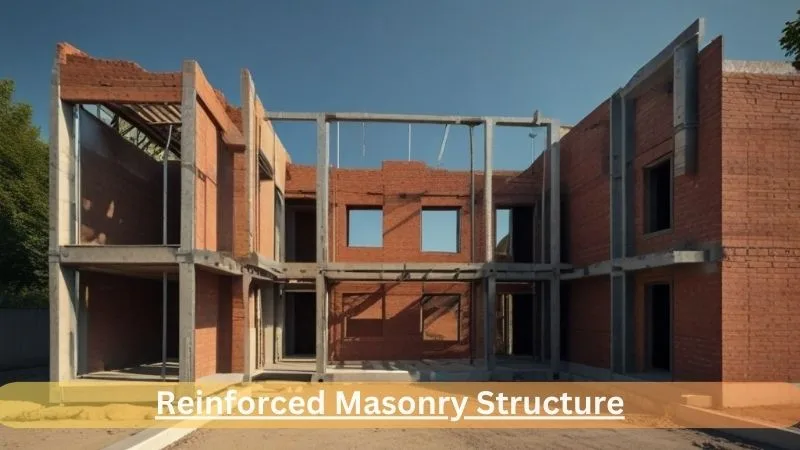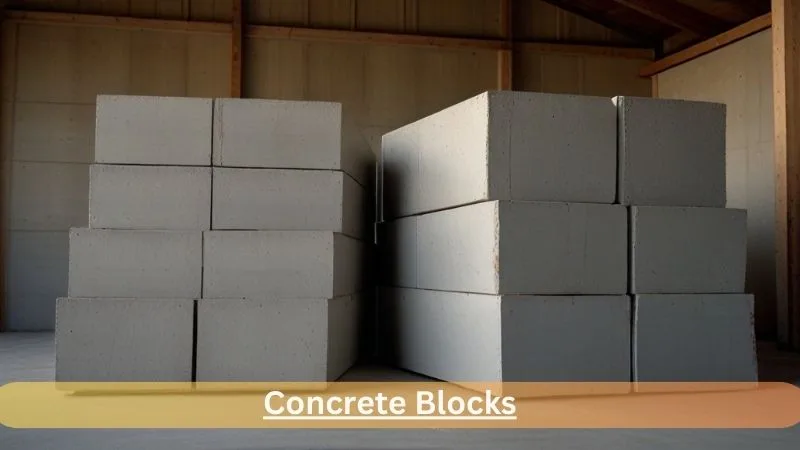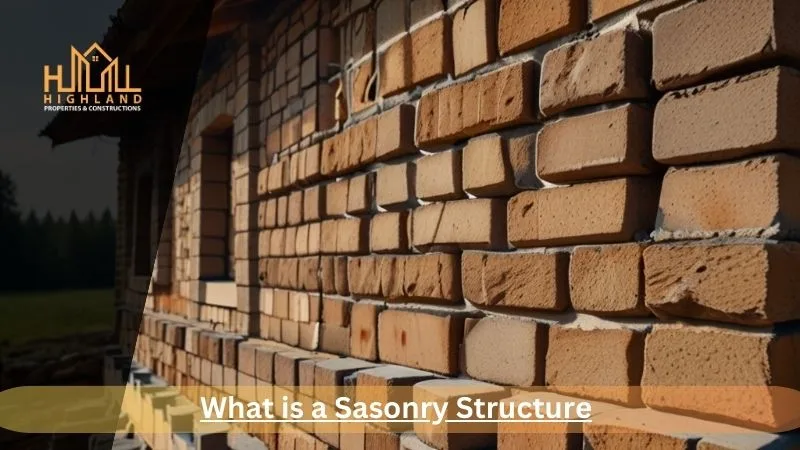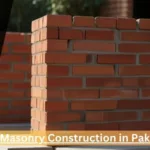What is a Masonry Structure
Introduction:
What is a masonry structure: Masonry is made of separate materials such as brick, stone or concrete held together with mortar. Due to their durability and solidity, they have been the basis of architecture for centuries. The arrangement of these units will be different, including methods such as racetrack or Flanders convention. Often found in buildings, retaining walls and bridges, masonry structures provide safety and beauty. They are fire, weather and earthquake-resistant, making them reliable for many buildings.
Types of masonry structure Load-bearing masonry structures:
Load-bearing masonry structures support vertical loads from the structure above and distribute them to the foundation [What is a masonry structure]. They rely on the strength of the masonry units and mortar to ensure integrity. Types include brick or stone walls and cavity walls.
Reinforced Masonry Structure:

Reinforced Masonry Structure incorporates steel bars or mesh and mortar in the masonry units to increase its strength and tensile strength. This type of structure is frequently used in areas where earthquakes occur or where integrity is required.
Composite Masonry Structures:
Composite masonry structures combine different materials such as masonry units, concrete, steel or wood to achieve the best results from each product. This model has many designs and can achieve design and beauty.
Also Read: Simple Village House Design in Pakistan
Masonry Arch Structure:
Masonry arch structure uses the strength of masonry units to create a curved structure that distributes loads horizontally and vertically. They are often found on bridges, tunnels and buildings, such as doors and windows.
Masonry Retaining Structures:
Masonry retaining structures are designed to protect against soil or water, retain soil or control erosion [What is a masonry structure]. Depending on the site’s requirements and the project, they can be constructed using different types of concrete, such as reinforced concrete or retaining walls.
Materials used in masonry construction
Many materials are used in masonry structures, including:
Brick:
Natural clay is one of the oldest and most widely used masonry materials. They are durable, fire resistant and come in various colours and textures.
Concrete Blocks:

Concrete blocks, also known as cinder blocks or concrete blocks (CMU), are versatile and valuable. They come in many different sizes and shapes and can be used on both load-bearing and non-load-bearing walls.
Stone:
Natural stones such as granite, limestone, and sandstone add beauty and durability to masonry structures. It is generally used for decorative or historical decoration purposes.
Mortar:
Mortar is a mixture of cement, sand and water to bond masonry units. Provides structural stability, weather resistance and good adhesion for wall mounting.
Rebar:
Rebar, or wire mesh, is often used in masonry construction to strengthen the structure and resist tensile strength.
Ties and Anchors:
Ties and anchors connect masonry walls to structures or stabilize them against external forces such as wind or seismic loads [What is a masonry structure]. These materials can be combined in different ways to create various types of concrete, each with unique advantages and uses.
Structural behaviour of masonry:
The efficiency of masonry depends on many factors:
Compressive Strength:
The wall is resistant to vertical loads resulting mainly from compression. The compressive strength of the wall and mortar determines the total material capacity of the structure.
Bending Strength:
The wall is subject to bending, especially in walls subjected to lateral loads. Strengthening the wall or using a lintel can increase bending strength.
Shear Strength:
Shear strength may occur due to eccentric loading or seismic activity. The relationship between masonry units, the use of steel reinforcement, and the widening of the connecting wall help resist shear forces.
Bonding and Mortar Properties:
The quality of the adherence and mortar joints of masonry units affects the integrity of the entire structure. Proper treatment of waste and appropriate construction methods are essential.
Thermal Properties:
The wall has good thermal properties to resist temperature changes. However, some wall materials have poor insulation properties and may require additional insulation.
Durability:
The durability of the wall depends on resistance to weathering, moisture penetration and chemical degradation. Choosing the right product and maintaining it is essential.
Cracking and movement:
The wall may crack due to shrinkage, conflict or thermal expansion. Joint inspection, joint widening, and appropriate support help control cracks and facilitate movement.
Understanding the properties of structural models is essential for creating safe and efficient structures that can withstand various loads and environments.
Advantages of masonry structure Masonry:
The structure has the following advantages:
Fire Resistance:
Masonry materials such as bricks and concrete blocks have fire-resistant properties, making them ideal for constructing walls and buildings.
Thermal Insulation:
Wall materials have thermal mass, which helps control the temperature in the home and reduces the energy used for heating and cooling.
Sound insulation:
Masonry walls provide good sound insulation, reducing noise from rooms or other areas.
Aesthetic appeal:
Masonry is available in a variety of colours, textures and patterns, allowing for versatile and visually appealing architectural designs.
Low Maintenance:
Masonry structures generally require minimal maintenance throughout their service life, reducing long-term maintenance costs [What is a masonry structure]. Generally, masonry construction combines strength, durability, beauty and environmental sustainability, making it the first choice for many construction projects.
Maintenance and repair of masonry structure:
Maintenance and repair of the wall is essential to ensure its longevity and integrity. Here are some maintenance and repairs:
Regular inspection:
Perform routine inspections for signs of damage such as cracking, weathering or peeling. Screening can help detect problems early and prevent them from worsening over time.
Cleaning:
Clean walls regularly to remove dirt, debris, mould and mildew. To avoid damaging the wall, use simple cleaning techniques such as low-pressure washing or scrubbing with a mild detergent.
Repointing:
Repointing will remove damaged joints and replace them with new grout. This helps increase the structural stability and weather resistance of the masonry wall.
Repair of Cracks:
Cracks in the wall can affect the structure’s integrity. Repair cracks immediately using an appropriate repair material such as epoxy grout, mortar patch or masonry caulk.
Water proofing:
Apply a sealant or coating to the wall surface to prevent water ingress and moisture. Focus on dangerous areas such as joints, corners and areas with standing water.
Prevent Efflorescence:
Efflorescence is a white powdery residue that forms on the wall surface due to salt buildup. Proper drainage, ventilation and sealing of wall surfaces can help prevent weathering.
Rehabilitation:
Re-rehabilitate masonry buildings to increase their durability and resistance to external factors such as seismic activity or wind loads [What is a masonry structure]. This may include installing steel reinforcement or modifying existing structures.
Continuous maintenance and timely repair are essential to preserve masonry buildings’ structural integrity and beauty and ensure that those living in them live a functional and safe life.
What is a masonry structure – FAQs:
Q1. What can damage masonry buildings?
Ans: The most common damage to masonry buildings includes cracking, weathering, spalls, material degradation and significant deformation. Cracks are usually localized and divide the structure into macroscopic blocks.
Q2. What is the main structure of masonry?
Ans: Mortar and cement mortar are the main components of masonry structures. They work with masonry units such as brick, stone, or concrete to create solid and durable structures. Mortar is made from water, sand and other compounds such as lime or cement.
Q3. What is the feature of masonry?
Ans: Using materials such as brick and stone can increase the thermal mass of the building. The wall is a fireproof material that protects buildings from fire. Masonry walls are more resistant to projectiles, such as debris from storms or hurricanes.





Leave a Reply